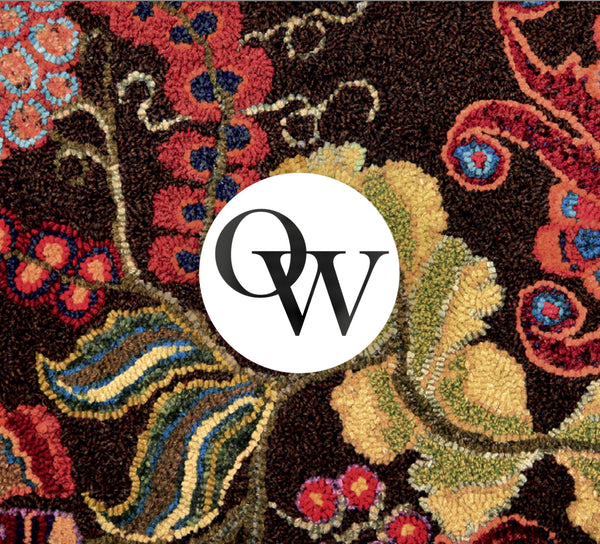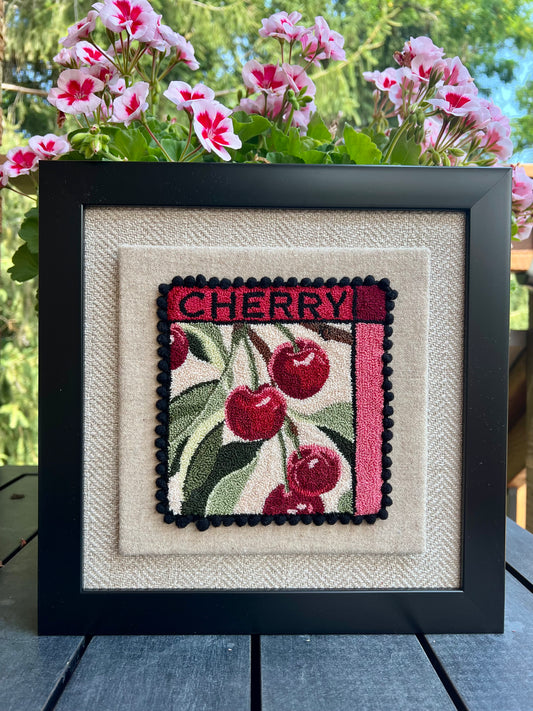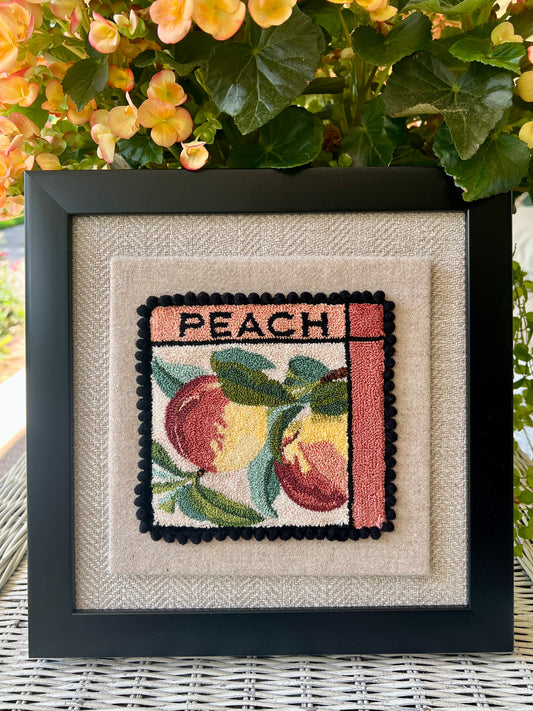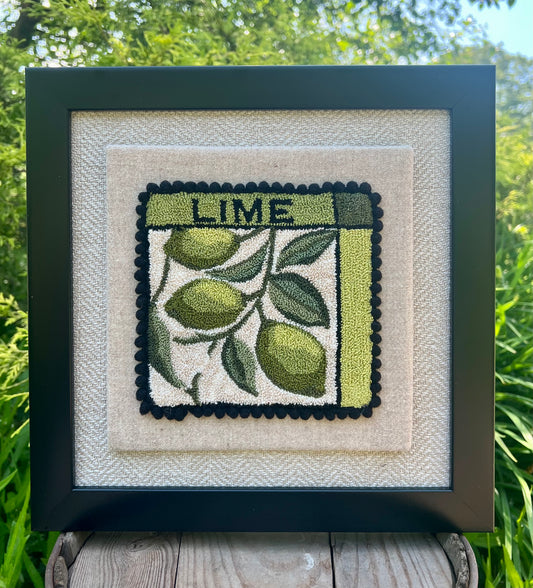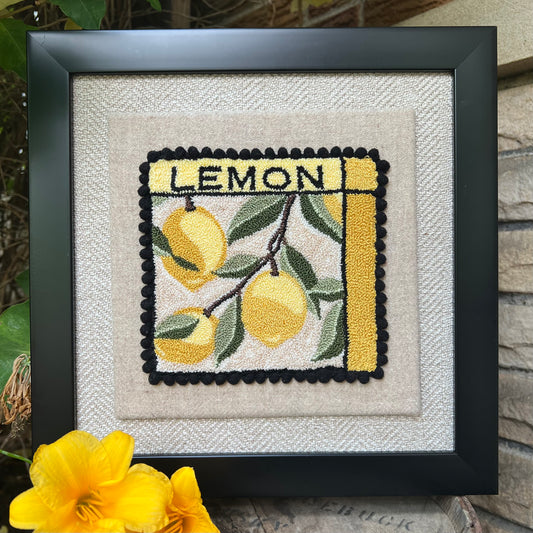Rug Hooking and Rug Punch Needle Beginner's Guide
 Rug Hooking and Rug Punch Needle: Beginner's Guide Q&A
Rug Hooking and Rug Punch Needle: Beginner's Guide Q&A
Objective
This Rug Hooking and Rug Punch Needle Q&A is designed to clarify the differences between two closely related—but distinct—fiber arts. Whether you are new to rug hooking or looking to expand your knowledge of rug punching, this guide explains tools, techniques, and materials to help you get started with confidence.
Rug Hooking vs. Rug Punching – Quick Guide
Rug Hooking
Tool: Rug Hook
Technique: Pull wool or yarn up through the foundation fabric (loops form on the front)
Pattern: Worked from the front side
Common Projects: Rugs, pillows, wall art, table runners
Popular Materials: Wool strips, linen, rug warp, monk's cloth
Rug Punching (Punch Needle)
Tool: Rug Punch / Punch Needle
Technique: Push yarn into foundation fabric (loops form on the opposite side)
Pattern: Worked from the back side
Common Projects: Rugs, pillows, wall art
Popular Materials: Yarn, wool strips, monk's cloth, linen, rug warp
Frames & Tools
Gripper Frames, Hoops, Wool Cutters, and Hooks or Rug Punch Needle.
Hooks or Rug Punch Needles are personal choices based on comfort and fiber size. Start on a small project and use tools that feel natural to your hands.
Beginner Tip:
Try a small project first to explore your preferred technique. Both rug hooking and punching are versatile, creative, and rewarding fiber arts.
The Art of Rug Hooking: A Brief History
Rug Hooking is a traditional textile art named for the tool used to create it—the rug hook. Using this technique, artists create functional and decorative pieces such as floor rugs, pillows, wall hangings, table runners, and coverlets.
This ancient fiber art dates back to early civilizations, with rug-hooked textiles found in Egyptian tombs. Rug Hooking later gained popularity in England over 400 years ago and traveled to Canada and New England in the mid-1800s. Colonial women, unable to afford imported rugs, repurposed worn wool clothing and burlap sacks to create durable floor coverings—forming the foundation of the Rug Hooking tradition we know today.
Rug Hooking & Rug Punching: Q&A Guide
1. What Is Rug Hooking?
The Rug Hooking Tool
A rug hook resembles a crochet hook, featuring a metal shank with a hooked tip and a handle typically made of wood or other materials.
The Rug Hooking Technique
Rug hooking is created by pulling strips of wool or yarn up through a loose-weave foundation fabric (such as linen) to form loops. The closely packed loops form the design's surface and are held securely by the foundation fabric.
How to Work a Rug Hooking Pattern
Rug hooking is worked from the front side of the pattern. The design faces you as you hook, and the loops are pulled forward to become the finished surface.
Where to Start Hooking
Begin at the center of the pattern and work outward. As loops are added, the pattern naturally expands due to increased density.
Styles & Types of Rug Hooks
Rug hooks come in many styles—pencil hooks, bent hooks, and ball hooks—available in various sizes and for right- or left-handed use. Popular makers include Hartman, Miller, and Fraser. Choosing a hook is highly personal and depends on comfort and wool strip width.

Rug Hook Size & Wool Strip Guide
(This is a general guide, not a rule set.)
| Wool Strip Size | Width (in/mm) | Hook Style |
|---|---|---|
| #3 | 3/32" / 2.4mm | Fine |
| #4 | 1/8" / 3.2mm | Fine |
| #5 | 5/32" / 4.0mm | Medium |
| #6 | 3/16" / 4.8mm | Extra Medium |
| #7 | 7/32" / 5.6mm | Medium to Primitive |
| #8 | 1/4" / 6.4mm | Primitive |
| #9 | 9/32" / 7.2mm | Coarse |
| #10 | 10/32" / 8.0mm | Extra Coarse |
Thicker wool requires a thicker hook shank to open the foundation fabric more easily and reduce hand strain.
Wool Cutters, Frames & Hoops
Wool Cutters
Wool cutters can be a significant investment and a personal choice. Popular cutters include Bliss, Fraser, Bee-Line, Townsend, and Bolivar. These tools hold their value well and are available new or used.
Gripper Frames
Gripper frames are the most commonly used frames for rug hooking. Available in lap or floor models, many rotate or tilt for comfort. Popular options include Snapdragon, Puritan, Bee-Line, Talon, and Needleworks Octagonal Frames.
Wooden Hoops (Beginner-Friendly)
A quality wooden hoop is an excellent starting point for beginners and a lower-cost alternative to frames. Rug hooking is a two-handed technique, so a hoop stand is helpful.
Rug Hooking Foundation Fabrics
Linen – Traditional, durable, higher cost
Rug Warp – Heavy cotton, excellent for floor rugs
Monk's Cloth – Affordable but stretches more
Burlap – Historically used, no longer recommended due to deterioration
Materials Used in Rug Hooking
Wool is the most durable and commonly used fiber, though artists often experiment with cotton, sari silk, or recycled textiles.

2. What Is Rug Punching?
Rug punching (also called rug punch needle) creates loops by pushing yarn down into the foundation fabric. You work from the backside of the pattern, while the loops form on the front.
Rug punching is popular among rug hookers because it uses many of the same materials and tools and produces similar finished pieces.
The Oxford Rug Punch Needle

The Oxford Rug Punch Needle, created by Amy Oxford, is a high-quality, ergonomic tool designed for speed and comfort. Made in the USA, Oxford tools accommodate various yarn weights and include a lifetime guarantee.
Punching Tips
Punch fully down into the fabric, then lift slightly—lifting too high can pull loops out. Always work consistently to maintain loop height.
Fabrics & Frames for Rug Punching
Standard foundation fabrics include Monk's Cloth, Linen, and Rug Warp. Gripper frames and hoops are both suitable.
Pattern Tip
Because you work from the back, directional designs and lettering must be reversed before punching.
Closing Statement
I hope this guide has clarified the differences between rug hooking and rug punching and provided helpful insight into the tools and materials. Both are beautiful, rewarding fiber arts, and I encourage you to explore, experiment, and find the technique that feels right for you.
By Kelly Kanyok
Artist & Founder of Orphaned Wool
Specializing in Punch Needle & Rug Hooking Patterns
© 2025 Kelly Kanyok / Orphaned Wool
All Rights Reserved. Content may not be reproduced without permission.
Subscribe to our emails
Subscribe to our mailing list for special offers, product launches, and more.
PUNCH NEEDLE COLLECTION - Paper or Cloth Patterns
-
Cherry - Punch Needle Pattern / Set Series Option
Regular price From $10.00 USDRegular price$40.00 USDSale price From $10.00 USDSale -
Peach - Punch Needle Pattern / Set Series Option
Regular price From $10.00 USDRegular price$40.00 USDSale price From $10.00 USDSale -
Lime - Punch Needle Pattern / Set Series Options
Regular price From $10.00 USDRegular price$40.00 USDSale price From $10.00 USDSale -
Lemon - Punch Needle Pattern / Set Series Options
Regular price From $10.00 USDRegular price$40.00 USDSale price From $10.00 USDSale
